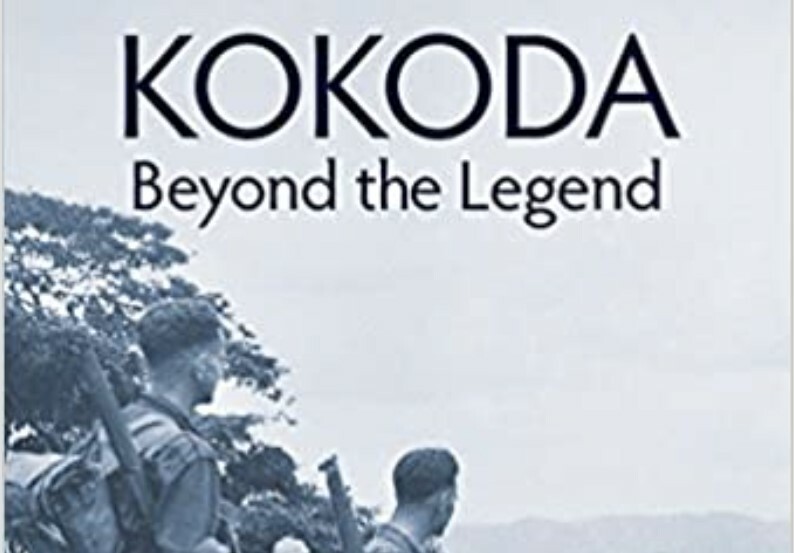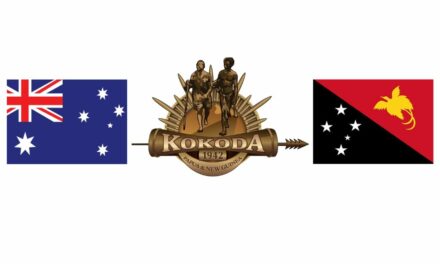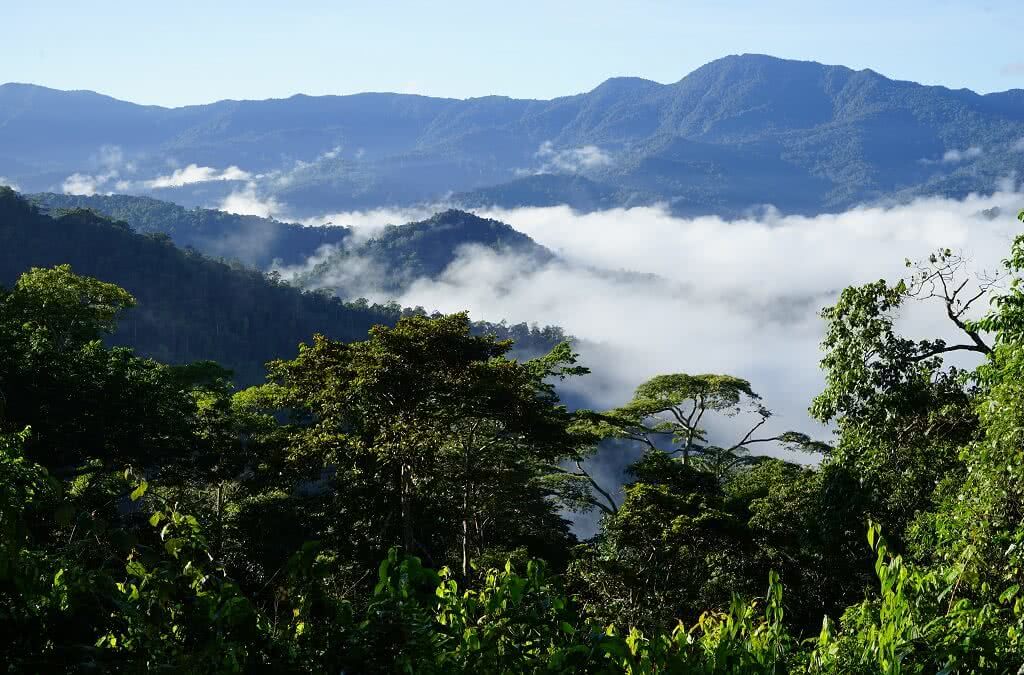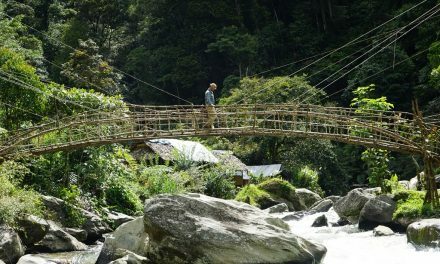In September 2012, the Australian War Memorial convened a major international conference to mark the 70th anniversary of the Kokoda and Papuan campaigns in 1942. Kokoda now dominates Australia’s popular memory of the Second World War and has become the focus for the war’s commemoration.
Popular narratives of Kokoda, however, rarely discuss the campaign in the war’s broader context or pose new questions concerning its conduct. Bringing together military historians and emerging scholars from the world, the conference reassessed the principal battles fought in Papua and discussed the campaign from both an Allied and Japanese perspective.
Adventure Kokoda trek leaders, Rowan Tracey and Charlie Lynn were invited to speak at the conference – an abstract of all speakers can be found at this link: http://www.awm.gov.au/conference/2012/abstracts_speakers/
Major Charlie Lynn – Guest Speaker:
“Kokoda is a powerful word. According to the Orokaiva, ‘koko’ means place of skulls – ‘da’ is village. The combination of syllables conjures up ‘adventure’ in the minds of sedentary beings. It makes sense. Many early explorers and missionaries searching for gold in the Yodda valley ended up in cooking pots.
“Then came the war. Kokoda was the first pitched battle fought against the Japanese. It signalled the beginning of a campaign where Australia’s fate hung in the balance as our diggers fought a fanatical enemy, treacherous terrain, legions of deadly mites, malarial mosquitoes, venomous snakes, hunger – and fear.
“Ever since I was a boy, I could remember thousands of veterans marching behind battle honours emblazoned with names such as Kokoda, Deniki, Isurava, Templeton’s Crossing and Eora Creek.
“So, when I first trekked Kokoda 21 years ago, well before the term ‘bucket list’ had become part of our jargon, I was struck by the fact that many of these battle-sites had been bypassed or reclaimed by the jungle. There was no information to mark the significance of the sites that were part of my generation’s collective memory of the Kokoda campaign.
“I had expected to see the remnants of the steps up the infamous ‘golden staircase’; to feel the pain of climbing ‘Engineers Ridge; to wonder how our diggers felt in their weapon pits on the forward slopes of ‘Brigade Hill’ as they waited to meet the enemy; to follow the footsteps of Private Bruce Kingsbury as he led a counter attack against the Japs at Isurava; to stand on the ground defended by Charlie McCallum as he bravely stood between the Japs and his men to protect their escape.
“I wanted to see where Captain Butch Bissett was machine gunned; where Ben Buckler led his fateful patrol; where Captains Claude Nye and Brett Langridge led their heroic charge at Brigade Hill; where Lieutenant-Colonel Ralph Honner held his famous parade at Menari with ‘Those Ragged Bloody Heroes’ of the 39th Battalion; where Corporal John Metson and Sergeant Lindsay Bear crawled on all fours along the trail refusing all offers for help because they had mates ‘a lot worse off than us’!
“I felt betrayed because there was not a single signpost, monument or memorial along the entire trail apart from a small plinth erected by a Japanese veteran at Efogi 2; a couple of crude monuments on the Kokoda plateau; and a few plaques placed by veterans such as Bede Tongs who is in the audience with us today.
“I was further disadvantaged by the fact that my Koiari guide knew nothing about the war history of the campaign and there were no maps or signs to assist in identifying any of the battle-sites such as Brigade Hill and Isurava.
“I was also struck by the fact that we had neglected those who sacrificed so much for us in Papua New Guinea – particularly the PNG wartime carriers. I learned that none have been issued with a medal for their service and some claim to have never been paid. When I asked one of the elders about the war on the Trail he explained that they had lived in peace for generations then one day the Australians and the Japanese came, had a big fight in their backyards, caused a lot of damage in their villages, then went away!
“The villages along the trail were poor and reliant on a basic subsistence economy. They grew food to send to markets in Port Moresby and used the proceeds to support village life which includes building community schools, purchasing rudimentary school supplies and medicine. Their only link to the outside world was a thrice weekly ‘milk run’ operated by MBA Airlines.
“I was told that the combined annual income of all villages along the trail was about $30,000 per year. I have no evidence to support that figure but the state of the villages and the demeanour of the people indicated that it was not too far off the mark.
“A year later, on the 50th anniversary of the campaign, Paul Keating became the first Prime Minister to visit Kokoda since the end of the war. He dropped to his knees, kissed the ground and proclaimed that ‘this was the first and only time we’ve fought against an enemy to prevent the invasion of Australia, so secure the way of life we had built for ourselves . . .this was the place where I believe the depth and soul of the Australian nation was confined, if it was founded at Gallipoli, it was certainly confirmed in the defence of our homeland here.’
“Professor Horner put his words into context yesterday but there is no doubt that Keating’s dramatic gesture and his words resonated. They also generated a great deal of talkback noise about whether it was a track or a trail. ‘Track’ is the language of the Australian bush’, they wailed – ‘trail’ is American and the yanks weren’t even there’. They were supported in a more subtle way by some latter-day historians who harboured an anti-American bias after President George Bush committed troops against that paragon of virtue in Iraq, Saddam Hussein. Their reference was often ‘a digger’ who swore black and blue that ‘it’s a bloody track mate’.
“Having never served in the military they can be excused for not experiencing a breed known as ‘barrack room lawyers’ in the ranks with as many opinions on such matters as there are ships, planes and tanks.
“The media deferred to the noise and even the custodian of our wartime history, the Australian War Memorial, yielded to have a bob each way – until yesterday when it was referred to by its correct title by all the speakers.
“Authentic historians acknowledge that the origin of the name, ‘Kokoda Trail’, dates back to 1947 when an Australian Battles Nomenclature Committee was established to define the battles in the Pacific. Their final report in 1958 adopted ‘Kokoda Trail’ as the official Commonwealth battle honour which was awarded to 10 infantry battalions and the Pacific Island Regiment.
“During the establishment of self-government in PNG in 1972, Australian administrators established a ‘Place Names Committee’ to examine the issue and recommended the official name be proclaimed ‘Kokoda Trail’.
“Chief Minister Michael Somare took office on 23 June 1972 when the nation achieved self-government as part of the process to independence in 1975. Somare accepted the recommendation of the Place Names Committee and the name ‘Kokoda Trail’ was gazetted on 12 October 1972.
“Since then the name, ‘Kokoda Trail’, has been officially recognised by the Returned Services League; the Australian War Memorial Second World War Galleries; and most importantly, the official Battle Honours of the 10 Australian battalions and the Papuan Infantry Battalion that fought in the Kokoda campaign.
“At a reunion pilgrimage at Kokoda in 1971 the architect of Kokoda, Captain Bert Kienzle, addressed the issue in his speech. ‘We who fought and saved this emerging nation, Papua New Guinea, from defeat by a ruthless and determined enemy knew it as the Kokoda Trail, not Track’.
“The author of the most definitive history of the Kokoda Trail, Stuart Hawthorne, recently wrote on the Australian War Memorial blog:
‘Exploration and development of the early parts of the overland route near Port Moresby began about 130 years ago. In this light, the campaign constitutes a very small part of the track’s history (about a third of one per cent) yet the importance ascribed to the WW2 period often assumes a considerably high significance. Of course the Kokoda campaign is very important in Australia on many levels but notwithstanding this, I often wonder whether the presumption that our Australian perspective displaces all others borders on the arrogant’.
“In a recent 70th anniversary speech at Parliament House in Port Moresby, PNG Prime Minister Peter O’Neill acknowledged the ongoing debate and reminded his audience that Kokoda Trail is the official name and ‘it is the name we prefer here in Papua New Guinea’.
“Another point worth mentioning is that when I first trekked Kokoda in 1991 every sign along the way referred to the Kokoda Trail. I have photos of them all.
“Notwithstanding these facts, the term ‘Kokoda Track’ has emerged as the politically correct term amongst the commentariat in Australia. There is not much we can do about that but I do believe that Australian Government agencies, departments and representatives; authentic war historians; and the official custodians of our wartime history should respect the sovereign right of Papua New Guinea to name its own geographic features; and acknowledge the title of the Battle Honour awarded to the battalions who fought across it.
“Whilst Keating’s visit refocused the nation on the significance of the Kokoda campaign it was negated by adverse publicity regarding ongoing social unrest in Port Moresby during the 90s. Trekker numbers were limited to a small band of hardy adventurers who braved the curfews and crossed trail each year.
“Media coverage of some early groups led to a modest increase in trekker numbers from 76 in 2001 to 365 in 2003. On the 60th anniversary of the battle for Isurava the Australian Government commissioned a memorial for the site which was opened by Prime Ministers’ John Howard and Sir Michael Somare on 26th August 2002. The memorial was designed and built by Michael Pender who adhered to the principle of commemoration in perpetuity which was adopted by the Imperial War Graves Commission in 1917. The Isurava Memorial is now regarded as a sacred place by all who trek it today.
“A year later trekker numbers surged by 195 per cent to 1,584.
“In response the PNG Government established a Special Purpose Local Government Authority to manage the emerging trekking industry. Submissions to the Australian Government to assist them fell on deaf ears so an expatriate was engaged as Chief Executive on a PNG salary of $12,500 per year. A local Board of Directors was appointed and a $100 trek fee was levied. Whilst none of the PNG Directors had any corporate qualifications or experience they quickly grasped the opportunities presented by a substantial cash flow from the trek fee levy. This posed considerable challenges for the Chief Executive as he had to validate receipts collected from friends, fiends and footpaths for anything and everything.
“I believe around $1 million was misappropriated during the four years they held office. It was impossible for one person without support to police.
“The Australian Government was finally shamed into action after a threat to mine part of the Kokoda Trail created public outrage in 2006. They reacted with a multi-million dollar announcement to assist PNG to prepare a submission for a World Heritage Listing.
“Whilst the Department of Veterans Affairs has responsibility for the memorial, and is now responsible for the annual Dawn Service at Isurava, the management of the trail was vested with the Heritage Division of the Department of Environment, Water, Heritage and the Arts. We argued, and continue to argue, that the Office of Australian War Graves within the Department of Veterans Affairs should be the responsible agency because of its wartime historical significance.
“It seems ludicrous that the Department of Veterans Affairs is responsible for the $10 million development of an interpretive Trail in France and Belgium to commemorate the upcoming centenary of the First World War but a separate department, with no connection to our military history, is responsible for the development of our Second World War interpretive Trail which is Kokoda.
“We can hardly criticise the ‘Melanesian way’ whilst we have systems like this!
“It is also interesting that the Department of Veterans Affairs uses the term ‘interpretive trail’ for France and Belgium but refuses to use the official name, Kokoda Trail, for Papua New Guinea.
“After the last Federal election, the Department of Environment, Water, Heritage and the Arts was superseded by the reshuffled Department of Sustainability, Environment, Water, Population and Communities. ‘Heritage’ was removed from the title. Their priorities are reflected in the initial Joint Understanding between Australia and Papua New Guinea which contains numerous environmental clichés but makes no mention of words such as ‘military history’ or ‘wartime heritage’.
“Under the Joint Understanding the Australian Government embedded personnel within the PNG Department of Conservation and Environment to manage the emerging Kokoda trekking industry. From that point on there was a tenfold increase in staff, a veritable army of consultants engaged, and a multi-million-dollar budget allocated. Pioneering trekking companies who had been operating for more than a decade before they arrived were labelled ‘commercial operators’ and sidelined. Local landowners across the trail were ignored.
“Three years later their record speaks for itself – trekker numbers have decreased by 46 per cent from 5621 in 2008 to 2,914 in 2011.
“Whilst the tragic air crash that claimed the lives of nine trekkers in 2009 contributed to the decrease there were other more obvious reasons. These include the engagement of consultants working on problems they don’t understand; ignorance of the ‘Melanesian way’; a lack of empathy with Koiari and Orokaiva cultures; and the isolation of the pioneering trek operators who were familiar with these challenges. This resulted in the Australian management squibbing the hard decisions and giving in to vested ‘wan-tok’ interests,
“The following facts support this assertion:
- No draft legislation has been developed to support the Kokoda Track Authority. As a result it has no teeth and local guides and carriers are exploited by being overloaded, underfed, underpaid and ill-equipped.
- There is no campsite booking system in place. This leads to unnecessary disputes and confusion during the peak trekking season.
- There is no campsite accreditation or audit system – as a result campsite owners are short-changed tens of thousands of dollars each year.
- There is no requirement for trek operators to provide trek itineraries when applying for trek permits. This could have important consequences in the event of an emergency.
- There is not a single toilet at the Kokoda airfield despite the fact that more than 7000 people transit through the place each year. We can only wonder what impact this will have on the surrounding palm oil plantation!
- There has not been a single survey to find out why people choose to trek across the trail and therefore no constructive feedback to help improve the experience.
- There is no evidence of a single sustainable outcome from the $2 million invested in a village livelihood program which was initiated in Canberra without any consultation with village communities or trek operators.
“I could go on!
“Suffice to say that the hard decisions necessary to develop a sustainable trekking industry based on the wartime heritage of the Kokoda campaign have been avoided by the Australian contingent in PNG since they assumed responsibility for the trail in late 2008.
“They took the path of least resistance from the ‘Melanesian way’ by morphing into a quasi-aid agency and linking up with various NGO organisations to distribute benefits to villagers. Some of these were initiated in Canberra; some were ‘gifted’ from well-meaning philanthropic organisations; and some were designed to make donors feel-good. I am not aware of any that were initiated in consultation with the PNG Department of Community Development or through the conduct of workshops facilitated by leaders familiar with Melanesian culture or fluent in ‘tok pisin’.
“NGOs justify their involvement by referring to a cycle of poverty across the trail. The facts tell a different story.
“Over the past decade more than 30,000 people have trekked Kokoda. This has generated approximately $23 million into village economies via fees, wages and local purchases. A further $28 million has been generated within the PNG economy via hotel accommodation, charter aircraft and purchases. Total GST revenue between Australian and PNG is in the region of $15 million.
“This is a far cry from the $30,000 combined annual income in the early 90s.
“There is, in fact, a cycle of wealth flushing through the village communities along the Kokoda Trail however there is little to show for it.
“If we really wanted to help them, we would seek advice from the University of PNG and the Department of Community Development to try and trace the money trails. How much goes to the church? How much is spent on schooling and living expenses in Port Moresby? How much is spent on healthcare? How do clans share the income? How do they account for it? How do they invest it?
“This research might not be as sexy as buildings they don’t need, or new equipment they will never use, but it will be more beneficial in the longer term.
“The situation is now so bad that effective management of trek operations along the trail is virtually non-existent. Unauthorised and inappropriate memorials have been constructed. Local PNG guides and carriers are shamelessly exploited by low-rent trek operators – they are overloaded, underfed, underpaid and poorly equipped. Local villagers look on helplessly as conga-lines of well-meaning ego-trekkers pass through villages raising funds for charities back home in the land-of-plenty. Anybody can be a trekker – anybody can be a trek operator. All they have to do is pay the appropriate fee. No medical clearances are required, no due diligence checks are conducted, no trek itineraries have to be submitted, and no campsite bookings are required. As a professional trek operator and leader, I believe the Australian management contingent embedded in the PNG Kokoda Track Authority abrogated their duty of care to both trekkers and villagers.
“The most important asset in the development of a sustainable trekking industry along the Kokoda Trail is the trekker who pays for the journey. Without him or her there will be no trek fees, no employment for guides and carriers, no campsite fees, etc.
“It is therefore important to understand why they choose to trek Kokoda. Is it because of the military history of the Kokoda campaign? Is it because of the physical challenge? Is it because of a sense of adventure? Is it because ‘it’s in their ‘bucket list’?
“It is also important to understand what they would like to see along the trail. Do they want modern bridges across the creeks? Do they want to see interpretive memorials at significant locations? Do they want boardwalks, handrails and steps? Do they want tents or huts built from bush materials? What sort of ablution facilities would they like to see – and where?
“These important questions are yet to be asked. One can only wonder if this is because the current management know the results will not conform to a pre-conceived agenda for National Park management.
“Our research amongst the groups we lead indicates that trekkers want to walk in the footsteps of the diggers ‘as they did it’. They don’t want boardwalks, bridges or manicured walkways and get agitated when they come across these ‘improved’ sections. They obviously appreciate that some work is necessary to ensure the trail is safe and that there are some swampy sections that can be improved but they want it left in its natural state.
“The original concept behind the development of a management authority for the Kokoda Trail was to develop a model that could be replicated at other significant battlesites and campaign areas throughout Papua New Guinea. We have obviously failed in this endeavour and therefore need to retrace our footsteps and re-examine our objectives for protecting and developing our wartime historical sites in Papua New Guinea. Sites such as Rabaul, Milne Bay, Buna, Gona, Sanananda, Lae, Wau, Wewak, Shaggy Ridge and the Black Cat Track will benefit from the Kokoda model if we get it right.
“Australia needs to lift its sights and acknowledge that Papua New Guinea is the custodian of sites sacred to our wartime heritage. We need to understand that the development of a wartime tourism industry is an effective means of re-establishing personal relationships that have been allowed to drift between our two countries for far too long.
“Wartime tourism is a gateway for future generations of Australians to learn more about our former mandated territory, our closest neighbour, our wartime ally and our fellow Commonwealth Member.
“The Kokoda Track Authority needs to be reorganised as a corporation and run as a business. It needs to establish a Community Development Trust run by a professional board to ensure the villagers along the trail receive shared benefits, particularly in the areas of health and education. The new model needs to be supported by specific legislation to support the management authority in its endeavours to develop a world class trekking destination based on wartime tourism. Kokoda is the gateway to a potential wartime tourism industry but at the moment it has fallen off its hinges.
“So, what needs to be done?
“I believe the Kokoda Track Authority needs to be reorganised as a corporation
“Non-Government Organisations should be diverted away from the trail to other villages in the Owen Stanley Ranges because there is enough income from the trekking industry to meet their current and future needs. This will avoid the inevitable social consequences of aid dependency and will ensure that neighbouring villages receive shared benefits as well.
“We must acknowledge that the Kokoda Trail is a wartime historical pilgrimage. People do not trek it to have an environmental levitation or to assume the role of a Mahatma Ghandi. They do it to walk in the footsteps of our diggers. We should therefore ensure they get the maximum value from their experience by developing a Military Heritage Interpretation Plan for the whole trail between Sogeri and Kododa.
“We need to encourage the Government to transfer responsibility for the development of the wartime heritage of the trail to the Department of Veterans Affairs who would obviously work in partnership with the Department of Sustainability, Environment, Water, Population and Communities as part of their preparation for a world heritage listing.
“I will conclude with a compelling reason why this should happen. A recent call for ‘expressions of interest for the preparation of a scoping study on heritage interpretation planning for the Kokoda Track’ was distributed to interested parties. I note that they cannot bring themselves to include the word ‘military’.
“Michael Pender, who designed and built the Isurava Memorial, Hellfire Pass and Sandakan, was given just four days’ notice to prepare his submission. Fortunately, the Network Kokoda foundation had engaged him to do some preliminary work and he had already conducted a reconnaissance of part of the trail with the Executive Director, Rowan Tracey, who spoke to us yesterday.
“Pender’s submission was not successful because the Departmental Evaluation Committee was concerned that he displayed a ‘bias towards the military heritage values of the region over other values’!
“The best illustration I can provide to highlight the philosophical difference between Departments responsible for protecting our wartime heritage along the Kokoda Trail is to compare a photograph of Michael Pender’s memorial constructed in accordance with the ‘principle of commemoration in perpetuity’ for the 60th anniversary of the battle for Isurava and the building recently constructed on the same battle-site with funding provided through the Department of Sustainability, Environment, Water, Population and Communities.
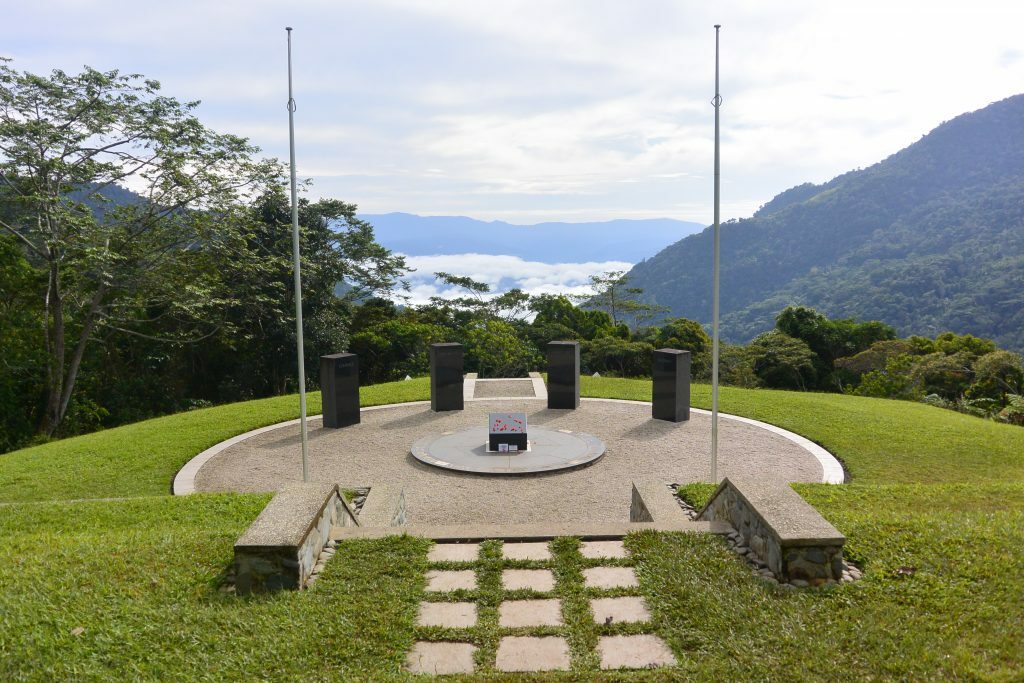
Isurava Memorial constructed for the 60th anniversary of the Kokoda campaign
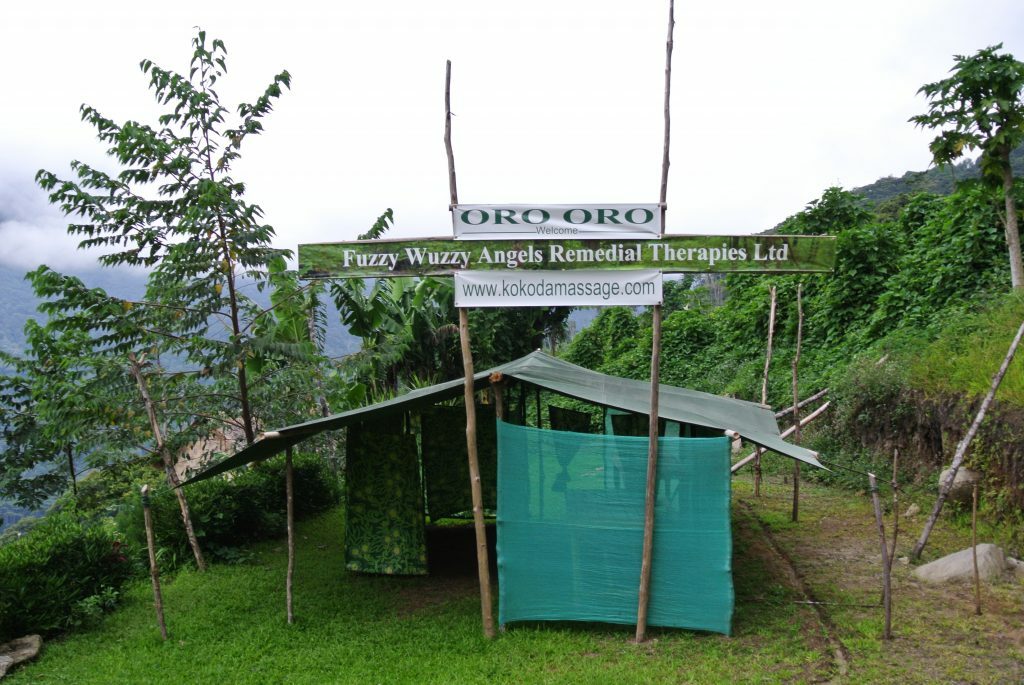
Massage parlour constructed adjacent to the Memorial during the 70th anniversary of the Kokoda campaign
“In my opinion a massage parlour on such a sacred battle-site besmirches the legacy of Kokoda.
“I can think of no better reason for the Department of Veterans Affairs and all other organisations charged with the protection of our military heritage to seek to have the wartime history of the Kokoda campaign accorded the same protection as we give to the Gallipoli peninsula.”
Charlie Lynn
8 September 2012

